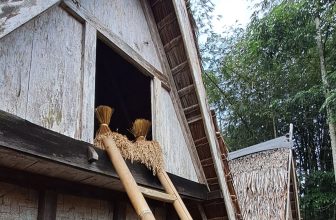
On one hand, the pandemic had supercharged an idea of the body as an armored enclosure to seal off against the dangers of the world beyond. On the other hand, calls abounded to redesign personal and public space for conviviality rather than isolation, for coming back into new ways of living more intentionally and meaningfully in the company of others. Even as the enduring strife of those years underscored the tenacity of political and social polarization in the United States, these small experiments in belonging suggested the genesis of something very different: “a vision of a different society,” as the abolitionist organizer Mariame Kaba put it, “built on cooperation instead of individualism, on mutual aid instead of self-preservation.” Such efforts anchor the vision of an alternative collective life that animates my new book, Something Between Us: The Everyday Walls of American Life, and How to Take Them Down.
Conviviality is a kind of “radical openness” in the social sphere, cultural theorist Paul Gilroy has argued, a rejection of the categorical divides that sustain racism, an ability instead “to live with alterity without becoming anxious, fearful, or violent.” Less a fantasy of social harmony under fraught circumstances, conviviality brings into focus ways of dealing with conflict and living at ease with difference through everyday circumstances of encounter and infrastructures of connection. Commons, parks, and open streetscapes; living quarters and resources arranged to encourage social awareness instead of solipsism; communication platforms to nurture contrary lines of thought: Such spaces can nurture the capacity to live and thrive alongside others unlike oneself, working against the tendency to reject and retreat.
These are possibilities with global significance. In recent decades, dozens of countries around the world have met aspiring migrants and refugees in need with fortified borders and imposing walls, marking continent after continent with lines that often reach hundreds of miles in length. Such gestures extend, to the largest scale, histories and patterns of enclosure that have accompanied the development of capitalist economies and individualistic societies over many centuries in Europe, the United States, and beyond.
In the face of such histories and their contemporary echoes, there is much at stake in learning to ask what kinds of boundaries are truly necessary and sustaining. As journalist Todd Miller puts it in Build Bridges, Not Walls: A Journey to a World Without Borders, “what kind of raw and beautiful world lies beyond the fences and walls that confine not just our bodies, but also our imagination, our speech, our very humanity?”
✽
The promise of such a vision comes through with many of the people and stories I’ve encountered over the last eight years, through my fieldwork in more than a dozen states around the country in the aftermath of President Donald Trump’s first presidential election win.







